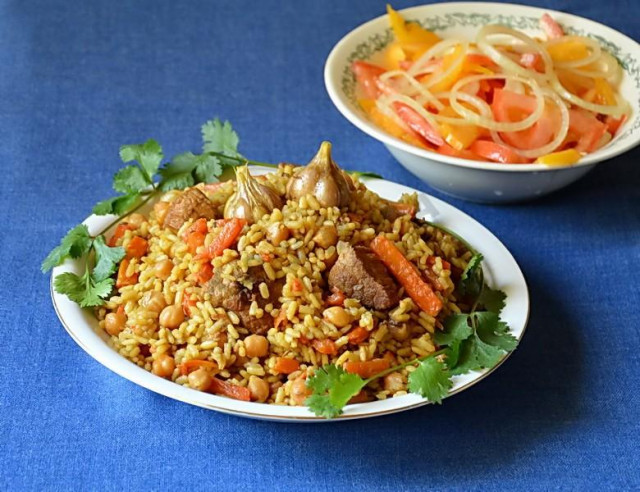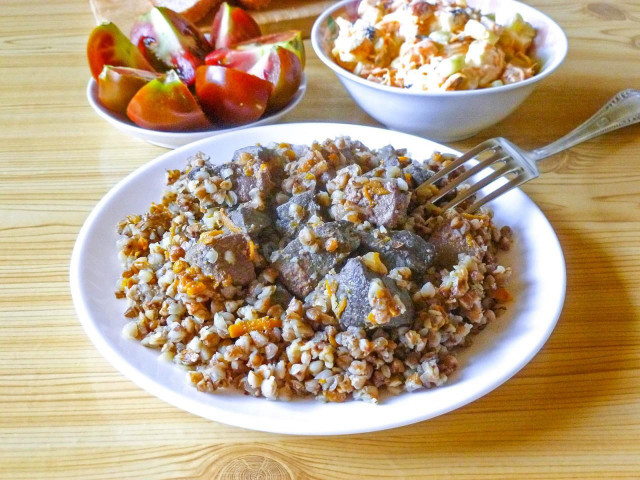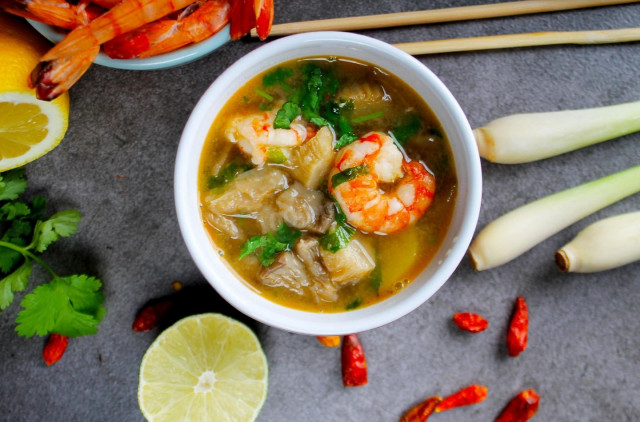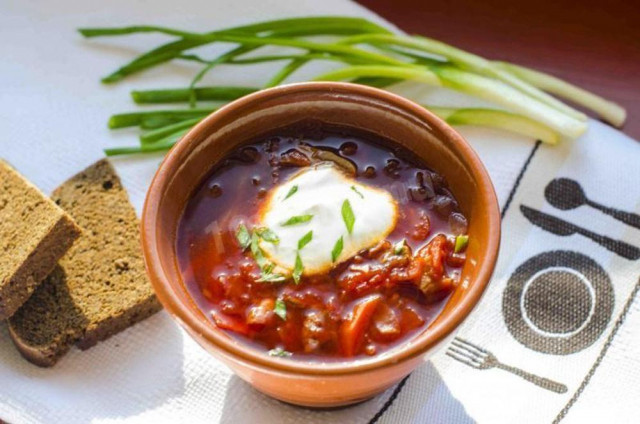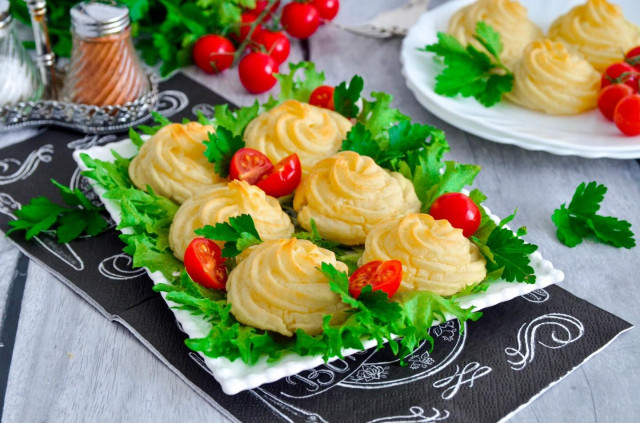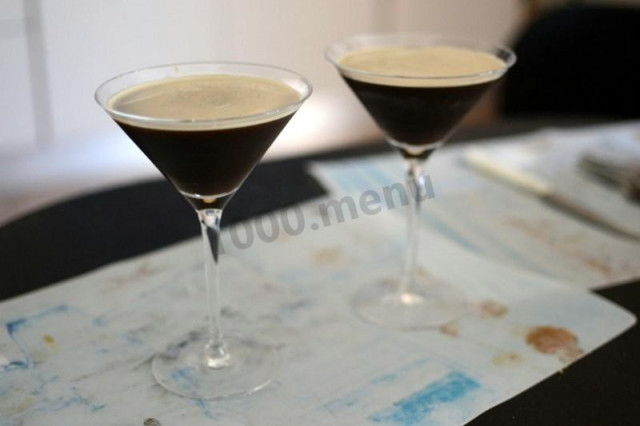Composition / ingredients
Step-by-step cooking
Step 1:
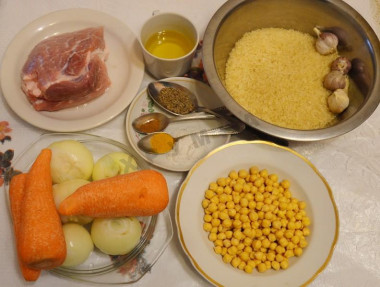
Preparing products for Pilaf with chickpeas. Pre-soak in warm water for at least 6 hours chickpeas (you can stay overnight), drain the water from it. Rice is washed in seven waters and left in water. Wash the meat thoroughly. We clean onions and carrots, mine. We remove one top layer of husk from the garlic heads, leaving them whole, mine.
Step 2:
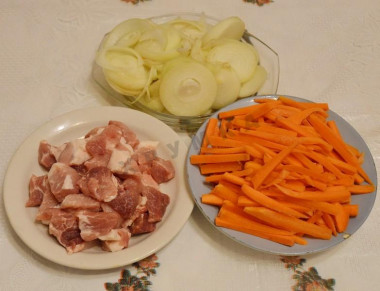
Cut the meat into large cubes. Cut the vegetables coarsely: onion rings 0.5-0.8 cm thick, carrots - 0.5-0.8 cm thick, 4-5 cm long.
Step 3:
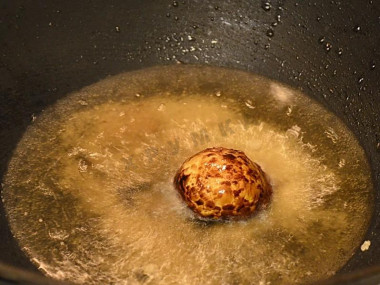
Pour vegetable oil into a cauldron or wok, put on maximum heat, add 0.5 tablespoons of salt, lower a small peeled onion. Stirring with a slotted spoon, fry the onion until golden brown. This is a sign that the oil has warmed up enough. We take out the onion, we won't need it anymore.
Step 4:
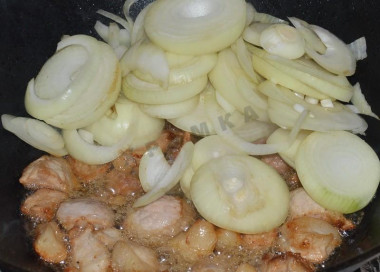
Add the meat, stir intensively for the first few seconds to prevent it from sticking to the walls of the cauldron. Fry the meat on maximum heat for 10-15 minutes, stirring occasionally, until the water evaporates and a golden crust forms. Without reducing the heat, add the onion. Stirring occasionally, fry it until soft for 5-10 minutes.
Step 5:
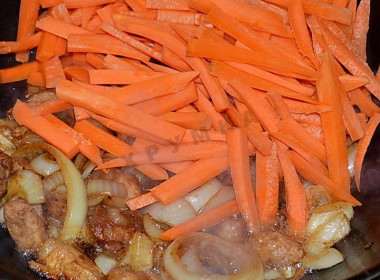
Without reducing the heat, put carrots in a cauldron with meat and onions and fry it for 10 minutes until soft (when pressing the edge of the skimmer on a piece of carrot, we can easily divide it).
Step 6:
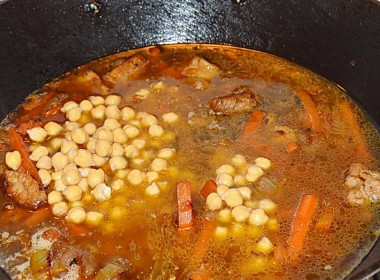
Since chickpeas do not like boiling water at the very beginning, pour cold water into the cauldron so that it covers the roast and immediately fall asleep swollen chickpeas. We make the fire very small, because the slower the contents of the cauldron boil, the tastier the pilaf will be. Mix thoroughly and wait. When the contents of the cauldron boil, salt, let it boil for 5 minutes and taste for salt - it should feel good.
Step 7:
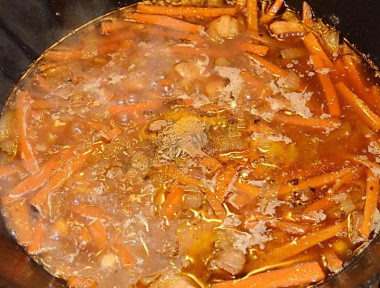
Half of the norm of cumin, red hot ground pepper, turmeric fall asleep in the cauldron and mix the contents again. It should boil evenly and slowly. To cook it, you need 30-40 minutes, but if the meat was tough, then you can cook for an hour.
Step 8:
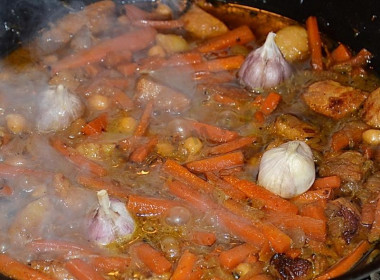
Mix the contents of the cauldron for the last time, level it and put garlic on top.
Step 9:
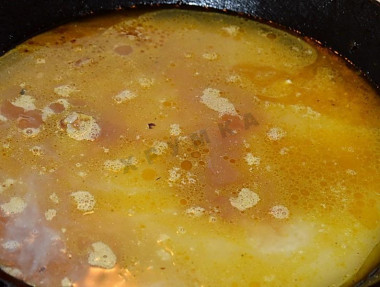
Carefully stack on top of fig. We level the rice with a slotted spoon in a cauldron and pour boiling water through the slotted spoon so that the water covers the rice by 1-1.5 cm. We make a fairly strong fire and wait for the liquid to be absorbed by the rice. In no case do not stir the cooked pilaf!
Step 10:

Finally the rice appeared, and all the liquid evaporated or absorbed. We make the fire as minimal as possible. Rice is collected by a slide in a cauldron. We make 5-6 punctures with a knife: one in the center of the slide to the bottom and next to it, in a circle - the rest. Now we fill the remaining cumin in them, rubbing it in the palms. Let the rest of the water evaporate. We close the cauldron tightly with a lid. Let the pilaf brew for 15-20 minutes. At the end, we mix the contents of the cauldron and serve it on the table. Enjoy your meal!
Caloric content of the products possible in the composition of the dish
- Lean mutton - 169 kcal/100g
- Fat mutton - 225 kcal/100g
- Lamb - brisket - 533 kcal/100g
- Mutton - ham - 232 kcal/100g
- Lamb chop on a bone - 380 kcal/100g
- Lamb shoulder - 284 kcal/100g
- Mutton - dorsal part - 459 kcal/100g
- Raw wild rice - 353 kcal/100g
- Brown raw rice - 360 kcal/100g
- Boiled brown rice - 119 kcal/100g
- White fortified raw rice - 363 kcal/100g
- Fortified boiled white rice - 109 kcal/100g
- White rice, steamed, with long grains raw - 369 kcal/100g
- Steamed white rice, boiled with long grains - 106 kcal/100g
- Instant dry rice - 374 kcal/100g
- Instant rice, ready to eat - 109 kcal/100g
- Fig - 344 kcal/100g
- Carrots - 33 kcal/100g
- Dried carrots - 275 kcal/100g
- Boiled carrots - 25 kcal/100g
- Garlic - 143 kcal/100g
- Turmeric - 325 kcal/100g
- Zira - 112 kcal/100g
- Vegetable oil - 873 kcal/100g
- Salt - 0 kcal/100g
- Chickpeas - 364 kcal/100g
- Onion - 41 kcal/100g
- Ground red pepper - 318 kcal/100g

